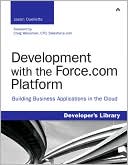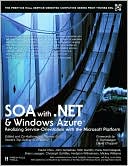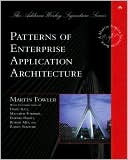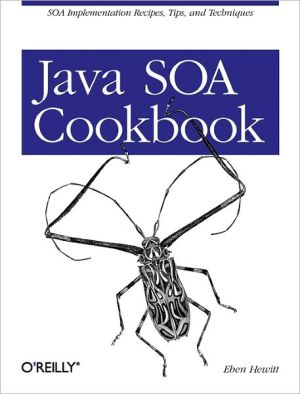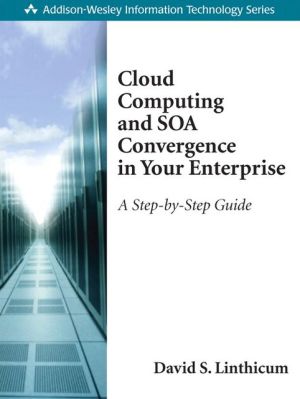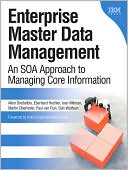Development with the Force.com Platform: Building Business Applications in the Cloud
Search in google:
Foreword by Craig Weissman, CTO, Salesforce.comBuild Cloud-Based Enterprise Applications Fast–and Drive More Value at Lower Cost!Using the Force.com platform, enterprise developers can build and deploy powerful applications far more rapidly than traditional J2EE, Microsoft .NET, or LAMP technology stacks permit. With a free subscription to the Force.com platform, developers can build apps that solve virtually any enterprise challenge with remarkable value, scalability, and reliability.This is the first book that brings together all the practical, technical guidance you need to make the most of Force.com in your own custom enterprise applications. Leading Force.com developer Jason Ouellette helps you identify suitable uses for Force.com and provides all the insights and sample code needed to rapidly prototype, deploy, and integrate with production-quality Force.com applications.Ouellette provides realistic code examples at every step, emphasizing maintainability, flexibility, andinteroperability throughout. Writing for developers, architects, and analysts, he shows how to• Create custom enterprise apps on Force.com in days or weeks, not months or years• Leverage Force.com’s extensive capabilities for storing, managing, and securing data• Quickly create sophisticated business logic with the Apex programming language• Use Visualforce to construct custom user interfaces• Establish automated or semiautomated workflows• Implement Ajax behaviors without writing JavaScript code or learning new JavaScript libraries• Integrate Force.com-based data and processes with other applications, inside and outside the platform• Display reports as state-of-the-art dashboards• Integrate Force.com applications with existing Single Sign-On systemsThis book’s extensive sample code may be downloaded from Force.com AppExchange at http://sites.force.com/appexchange/listingDetail?listingId=a0N30000001SS3rEAG
Foreword xviPreface xixAcknowledgments xxiAbout the Author xxiiChapter 1 Introducing Force.com 1Force.com in the Cloud Computing Landscape 1Platform as a Service (PaaS) 2Force.com as a Platform 4Force.com Services 7Inside a Force.com Project 9Project Selection 9Team Selection 11Lifecycle 12Tools and Resources 15Sample Application: Services Manager 17Background 17User Roles 18Development Plan 18Summary 19Chapter 2 Database Essentials 21Overview of Force.com’s Database 21Objects 21Fields 23Relationships 25Query Language 25Data Integration 28Working with Custom Objects 31Force.com Developer Edition 31Tools for Custom Objects 31Object Creation 33Field Creation 36Entering and Browsing Data 38Sample Application: Data Model 41Logical Data Model 41Force.com Data Model 47Implementing the Data Model 50Importing Data 55Summary 60Chapter 3 Database Security 63Overview of Database Security 63Object-Level Security 65Profiles 66Field-Level Security 67Record-Level Security 69Record Ownership 69User Groups 70Sharing Model 70Sample Application: Securing Data 73Designing the Security Model 74Implementing the Security Model 78Testing the Security Model 83Summary 88Chapter 4 Additional Database Features 89Dependent Fields 90Record Types 90Defining Record Types 91Securing Record Types 92Using Record Types 93Roll-Up Summary Fields 95Field History Tracking 97Tags 98Enabling Tags 99Using Tags 99Force.com Connect Offline 100Administration of Force.com Connect Offline 100Using Force.com Connect Offline 102Sample Application: Applying the Features 103Dependent Fields for Skill Types 104Roll-Up Summary Fields for Project Reporting 104Force.com Connect Offline for Staffing 107Summary 109Chapter 5 Business Logic 111Introduction to Apex 112Introducing the Force.com IDE 113Installation 113Force.com Perspective 113Force.com Projects 114Problems View 115Schema Explorer 115Apex Test Runner View 116Execute Anonymous View 116Apex Language Basics 116Variables 117Operators 121Arrays and Collections 122Control Logic 124Understanding Governor Limits 129Database Integration in Apex 130Database Records as Objects 130Database Queries 132Persisting Database Records 137Database Triggers 139Database Security in Apex 142Object-Oriented Apex 143Encapsulation 143Information Hiding 147Modularity 148Inheritance 149Polymorphism 150Debugging and Testing 151Debugging 151Testing 154Sample Application: Validating Timecards 155Force.com IDE Setup 156Creating the Trigger 156Unit Testing 157Summary 159Chapter 6 Advanced Business Logic 161Additional SOQL Features 161Inner Join and Outer Join 162Semi-Join and Anti-Join 163Multi-Select Picklists 166Salesforce Object Search Language (SOSL) 167SOSL Basics 167SOSL in Apex 168Transaction Processing 170Data Manipulation Language (DML) Database Methods 170Savepoints 171Record Locking 173Apex Managed Sharing 174Sharing Objects 175Creating Sharing Rules in Apex 176Sending and Receiving Email 180Sending Email 181Receiving Email 185Dynamic Apex 187Dynamic Database Queries 188Schema Metadata 189Sample Application: Adding Email Notifications 192Summary 193Chapter 7 User Interfaces 195Introduction to Visualforce 196Overview of Visualforce 196Getting Started with Visualforce 198Visualforce Controllers 201Standard Controllers 201Custom Controllers 203Controller Extensions 206View Components 207View Component Basics 208Data Components 210Action Components 213Primitive Components 214Force.com-Styled Components 215Force.com User Interface Components 218Visualforce and the Native User Interface 222Standard Pages 222Standard Buttons 224Page Layouts 225Custom Buttons and Links 226Custom Tabs 227Visualforce in Production 227Security 228Error Handling 230Governor Limits 232Unit Tests 232Sample Application: Skills Matrix 233Basic Implementation 234Full Implementation 235Implementation Walkthrough 236Summary 242Chapter 8 Advanced User Interfaces 245Asynchronous Actions 245Partial Page Refresh 246Action as JavaScript Function 247Action as Timed Event 248Action as JavaScript Event 249Indicating Action Status 250Modular Visualforce 252Static Resources 252Inclusion 253Composition 253Custom Visualforce Components 255Extending Visualforce 257Using JavaScript Libraries 257Adobe Flex and Visualforce 258Force.com Sites 264Sample Application: Enhanced Skills Matrix 268Summary 272Chapter 9 Integration 273Force.com Integration Solutions 273Outbound Messaging 274Salesforce-to-Salesforce (S2S) 279Developing Custom Integrations 288Calling Web Services from Apex Code 289Using HTTP Integration 290Sample Application: Anonymous Benchmarking 293Visualforce Page Design 294Visualforce Controller Design 295Integrating the Web Service 296Sample Implementation 299Summary 302Chapter 10 Advanced Integration 303Understanding Force.com Web Services 304Basics of Force.com Web Services 304Generating the Web Service Client 306Logging In 310Force.com Data Types in SOAP 313Error Handling 314Using the Enterprise API 314Retrieving Records 315Writing Records 317Building Custom Web Services in Apex 319Understanding Custom Web Services 320Service Definition 321Calling a Custom Web Service 322Introduction to the Metadata API 323Overview 323Getting Started with the Metadata API 324Sample Application: Database Integration 326Integration Scenario 326Implementation Strategy 326Sample Implementation 327Summary 330Chapter 11 Additional Platform Features 333Workflow and Approvals 333Introduction to Workflow 334Getting Started with Approval Processes 335Introduction to Analytics 342Working with Reports 343Configuring Dashboards 345Using Analytic Snapshots 346Force.com for International Organizations 347Multilingual Support 348Using Multiple Currencies 350Advanced Currency Management (ACM) 353Using Single Sign-On 354Federated Single Sign-On 354Delegated Single Sign-On 359Sample Application: Project Map Dashboard 362Summary 368Index 369
